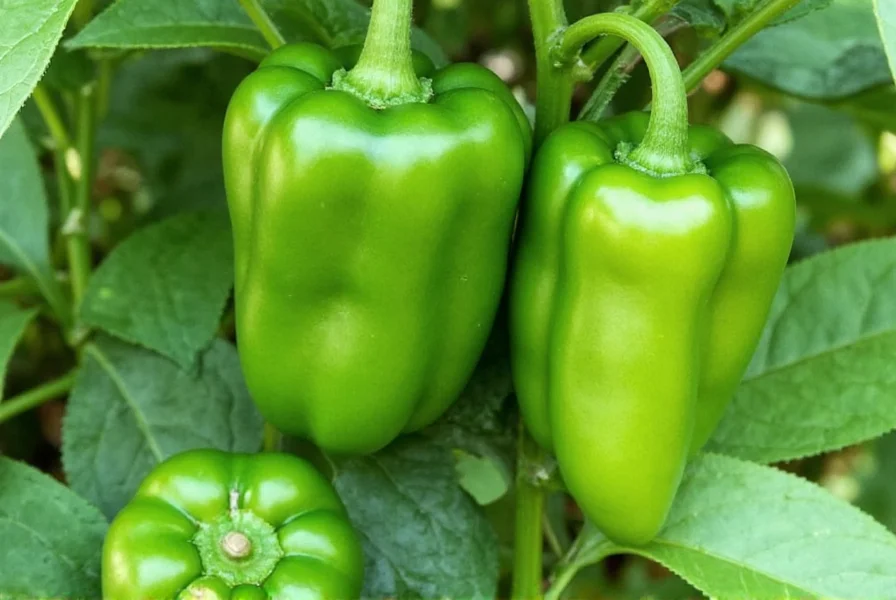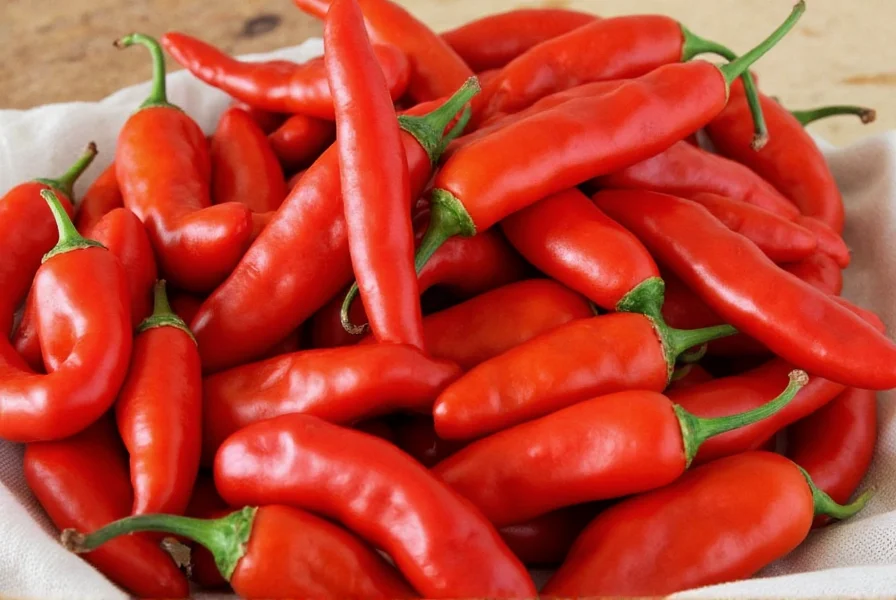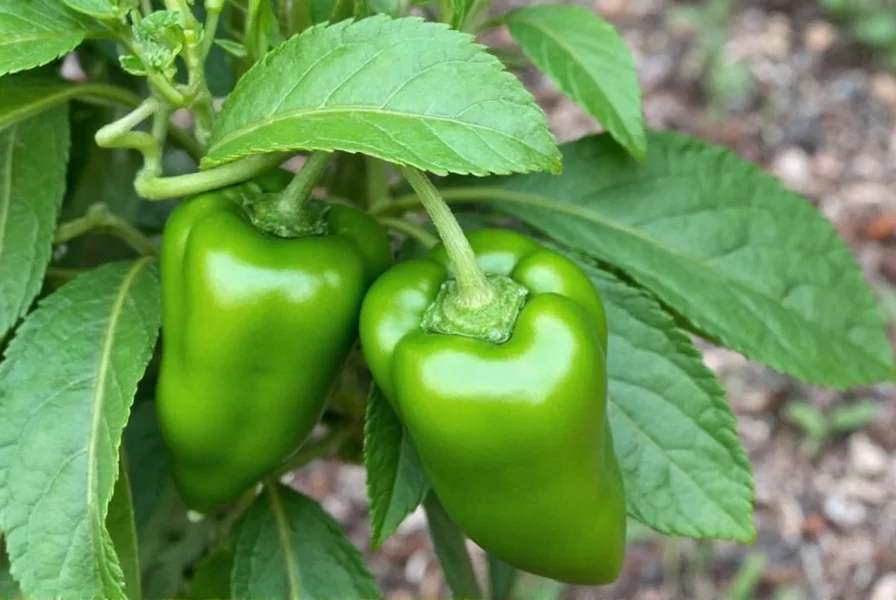Whether you're a seasoned gardener or a beginner, growing poblano pepper plants can be a rewarding experience. Poblano peppers (Capsicum annuum) are a mild to medium heat chili pepper native to Mexico, prized for their rich, earthy flavor and versatility in cooking. According to the University of California Cooperative Extension, this pepper variety is ideal for both home gardens and commercial cultivation, with proper care yielding abundant harvests. This comprehensive guide covers everything you need to know: from planting and care to harvesting and culinary uses, with scientifically-backed advice to ensure your poblano plants thrive.
Table of Contents
- What Is a Poblano Pepper Plant?
- Growing Your Own Poblano Pepper Plant
- Practical Tips for Caring for Poblano Pepper Plants
- Comparing Poblano with Other Peppers
- Frequently Asked Questions
- Buying Guide for Poblano Pepper Plants
- Conclusion
What Is a Poblano Pepper Plant?
The poblano pepper plant (Capsicum annuum) is a staple in Mexican cuisine, known for its mild to medium heat profile and rich, earthy flavor. Native to Puebla, Mexico, these peppers typically measure 4-6 inches in length and turn from dark green to deep red when fully ripe. According to the USDA Agricultural Extension Service, poblano peppers have a Scoville Heat Unit (SHU) rating of 1,000-2,000, placing them between bell peppers (0 SHU) and jalapeños (2,500-8,000 SHU).
One of the most popular uses of the poblano pepper is in chiles rellenos, where they are stuffed with cheese and baked. They're also commonly roasted and used in salsas, sauces, and soups. The poblano pepper plant can be grown both indoors and outdoors, depending on your climate and space availability. For optimal growth, it requires well-draining soil, consistent moisture, and full sun exposure.

Growing Your Own Poblano Pepper Plant
Growing your own poblano pepper plant can be a rewarding experience. Whether you're planting seeds or starting with a seedling, here's what you need to know based on expert horticultural guidelines:
- Climate: Poblano peppers thrive in warm climates with temperatures between 70°F and 90°F (21°C to 32°C). If you live in a cooler region, consider growing them indoors or in a greenhouse. According to the University of Florida IFAS Extension, they require a frost-free growing season of at least 60-90 days.
- Soil: Use well-draining, nutrient-rich soil with a pH of 6.0-7.0. A mix of 60% garden soil, 30% compost, and 10% perlite works well for optimal drainage and nutrient retention.
- Planting: Sow seeds 1/4 inch deep, spacing plants 18-24 inches apart. For seedlings, transplant after last frost when soil temperature is above 60°F (15.5°C).
- Water: Keep the soil consistently moist but not soggy. Water deeply 2-3 times per week, especially during flowering and fruiting stages. Overwatering can lead to root rot.
- Fertilizer: Apply a balanced organic fertilizer (10-10-10 NPK) every 4-6 weeks. During fruiting, switch to a high-phosphorus fertilizer to promote pepper development.
- Support: As the plants grow, they may need stakes or cages to support their heavy fruit load. Install supports early to prevent stem damage.
From seed to harvest, poblano peppers typically take 70-90 days. For a sweeter, smokier flavor, let them ripen further until they turn red. Harvest when peppers are firm and deep green for classic dishes like chiles rellenos.
Practical Tips for Caring for Poblano Pepper Plants
To ensure your poblano pepper plant thrives, follow these expert-approved tips based on horticultural research:
- Light: Provide at least 6-8 hours of direct sunlight daily. If growing indoors, use full-spectrum LED grow lights positioned 12-18 inches above the plants.
- Temperature: Ideal temperatures range between 70°F and 90°F (21°C to 32°C). Avoid exposing the plant to temperatures below 50°F (10°C) or above 95°F (35°C), as this can cause blossom drop.
- Pruning: Prune the plant occasionally to encourage bushier growth and improve air circulation. Remove the first few flowers to promote stronger root development.
- Pests: Watch out for aphids, spider mites, and whiteflies. Use organic insecticides or neem oil to keep them at bay. For severe infestations, introduce beneficial insects like ladybugs.
- Disease Prevention: Rotate crops annually to prevent soil-borne diseases. Ensure proper spacing for air circulation, and avoid overhead watering to reduce fungal issues.
- Harvesting: Pick peppers when they're firm and dark green for standard use, or leave them to ripen to red for sweeter, smokier flavor. Use sharp pruners to cut stems cleanly, avoiding damage to the plant.
Proper care ensures consistent yields. Poblano plants typically produce 6-12 peppers per plant, with optimal conditions yielding up to 20 peppers per plant. Monitor plants weekly for signs of stress or disease to address issues early.
| Pepper Type | Heat Level (SHU) | Flavor Profile | Best Uses |
|---|---|---|---|
| Poblano | 1,000-2,000 | Earthy, slightly sweet, smoky when roasted | Stuffed dishes (chiles rellenos), mole sauces, roasted salsas |
| Jalapeño | 2,500-8,000 | Grassy, bright, slightly vegetal | Salsas, guacamole, pickling, fresh toppings |
| Ghost Pepper | 800,000-1,000,000 | Smoky, fruity, intense heat | Extreme hot sauces, culinary challenges, experimental dishes |
| Bell Pepper | 0 | Sweet, crisp, fresh | Salads, stir-fries, roasting, stuffing |
As you can see, the poblano pepper plant offers a balanced flavor profile that's accessible to most palates while providing distinctive depth for culinary applications. Its moderate heat makes it ideal for beginners exploring spicy foods, while experienced cooks appreciate its versatility in traditional and modern dishes.

Frequently Asked Questions
How long does it take for a poblano pepper plant to produce fruit?
Poblano pepper plants typically take 70-90 days from seed to harvest, depending on growing conditions. When starting from seedlings, you can expect to harvest peppers about 60-75 days after transplanting. The peppers are ready to pick when they're firm and deep green (4-6 inches long), though they can be left to ripen to red for a sweeter, more complex flavor. For optimal yield, harvest peppers regularly to encourage continuous production.
Can poblano peppers be grown in containers?
Yes, poblano peppers can be successfully grown in containers. Choose a pot that's at least 12-14 inches in diameter with good drainage. Use high-quality potting mix rather than garden soil, and make sure to water consistently as container plants dry out faster. Container-grown poblano plants may need more frequent fertilizing and may produce slightly smaller yields than those grown in the ground, but they're a great option for patios, balconies, or areas with poor soil. For best results, select a dwarf variety specifically bred for container growing.
How hot are poblano peppers compared to other common peppers?
Poblano peppers range from 1,000 to 2,000 Scoville Heat Units (SHU), placing them in the mild to medium heat category. For comparison, bell peppers are 0 SHU (no heat), jalapeños range from 2,500 to 8,000 SHU, serranos range from 10,000 to 23,000 SHU, and habaneros range from 100,000 to 350,000 SHU. Poblanos are significantly milder than these common hot peppers, making them accessible to most palates while still providing some warmth and depth of flavor. The heat level can vary slightly based on growing conditions, with stress factors like drought sometimes increasing spiciness.
When is the best time to harvest poblano peppers?
Poblano peppers can be harvested at two stages: when they're dark green (about 4-6 inches long) or when they've ripened to red. Green poblanos have a slightly more vegetal, fresh flavor and are firmer, making them ideal for stuffing dishes like chiles rellenos. Red poblanos are sweeter, more complex, and slightly softer, with a richer flavor that's excellent for roasting and making sauces like mole poblano. Harvest by cutting the stem with scissors or pruners rather than pulling the pepper off the plant to avoid damaging the plant. Regular harvesting encourages the plant to produce more peppers.
How should I store fresh poblano peppers?
Fresh poblano peppers can be stored in the refrigerator's crisper drawer for 1-2 weeks. For longer storage, roast and peel them, then freeze in airtight containers for up to 6 months. You can also dry poblano peppers by threading them on a string and hanging them in a warm, dry place, or using a food dehydrator. Dried poblanos (called ancho peppers when dried and ripe) can be stored for up to a year in an airtight container in a cool, dark place. For maximum flavor retention, store peppers whole until ready to use.
Why are the leaves on my poblano pepper plant turning yellow?
Yellowing leaves on a poblano pepper plant can indicate several issues: overwatering (most common cause), nutrient deficiency (particularly nitrogen), pests like spider mites, or fungal diseases. First, check your watering practices - the soil should be moist but not soggy. If watering seems appropriate, try a balanced fertilizer. If you see tiny webs on the undersides of leaves, you likely have spider mites, which can be treated with insecticidal soap or neem oil. Ensure good air circulation around your plants to prevent fungal issues. For nitrogen deficiency, apply a nitrogen-rich fertilizer or compost tea. If the problem persists, consult a local agricultural extension service for diagnosis.
What are the best companion plants for poblano peppers?
Good companion plants for poblano peppers include basil, which repels pests and enhances flavor; onions and garlic, which deter many common garden pests; and marigolds, which help repel nematodes and other harmful insects. Tomatoes and oregano also make excellent companions. Avoid planting poblanos near beans or fennel, which can inhibit their growth. Good companion planting can improve yields, reduce pest problems, and make more efficient use of garden space. For optimal results, plant companions within 12-18 inches of your poblano plants to maximize benefits.
Can I save seeds from my poblano peppers for next year?
Yes, you can save seeds from poblano peppers for future planting. Choose fully mature peppers (preferably red-ripe ones) from healthy plants. Cut the pepper open, scrape out the seeds, and spread them on a paper towel to dry for 1-2 weeks in a cool, dry place. Once completely dry, store the seeds in an airtight container in a cool, dark place. Properly stored poblano seeds remain viable for 2-3 years. Note that if your poblano plants were grown near other pepper varieties, cross-pollination may have occurred, which could affect the characteristics of next year's plants. For consistent results, grow only one pepper variety in your garden or isolate plants by at least 500 feet.
Buying Guide for Poblano Pepper Plants
If you're ready to start your own poblano pepper plant, here's a quick guide to help you choose the best options based on expert recommendations:
Top Picks for Poblano Pepper Plants
- Seeds: Look for high-quality Capsicum annuum seeds from reputable seed companies like Johnny's Selected Seeds or High Mowing Organic Seeds. These offer reliable germination and good yields. For beginners, consider varieties like "Poblano Improved" or "Poblano Hybrid" which have enhanced disease resistance.
- Seedlings: If you want to skip the seed-starting process, purchase young poblano pepper plants from local nurseries or online retailers such as GreenLife Plants or Plants.com. Look for healthy seedlings with dark green leaves, sturdy stems, and no signs of pests or disease.
- Hybrid Varieties: Some growers prefer hybrid versions like Poblano Hybrid 123, which may have better disease resistance or higher yield potential. For container gardening, look for dwarf varieties specifically bred for small spaces.
When selecting a poblano pepper plant, consider your climate, available space, and how much time you can dedicate to maintenance. If you're new to gardening, starting with a seedling is often easier than sowing seeds directly. For best results, purchase plants from reputable sources that provide clear growing instructions and variety information.
Conclusion
The poblano pepper plant is a delightful addition to any spice lover's garden. With its mild heat, rich flavor, and versatility in the kitchen, it's no wonder this pepper has become a staple in many cuisines around the world. Whether you're growing your own or buying a plant from a store, there's something special about the journey from seed to plate.
By following the tips outlined in this article, you'll be well on your way to cultivating a thriving poblano pepper plant that adds both flavor and fun to your culinary adventures. So grab your gloves, get your hands dirty, and enjoy the spicy journey! For additional guidance, consult your local agricultural extension service or reputable gardening resources for region-specific advice.











 浙公网安备
33010002000092号
浙公网安备
33010002000092号 浙B2-20120091-4
浙B2-20120091-4